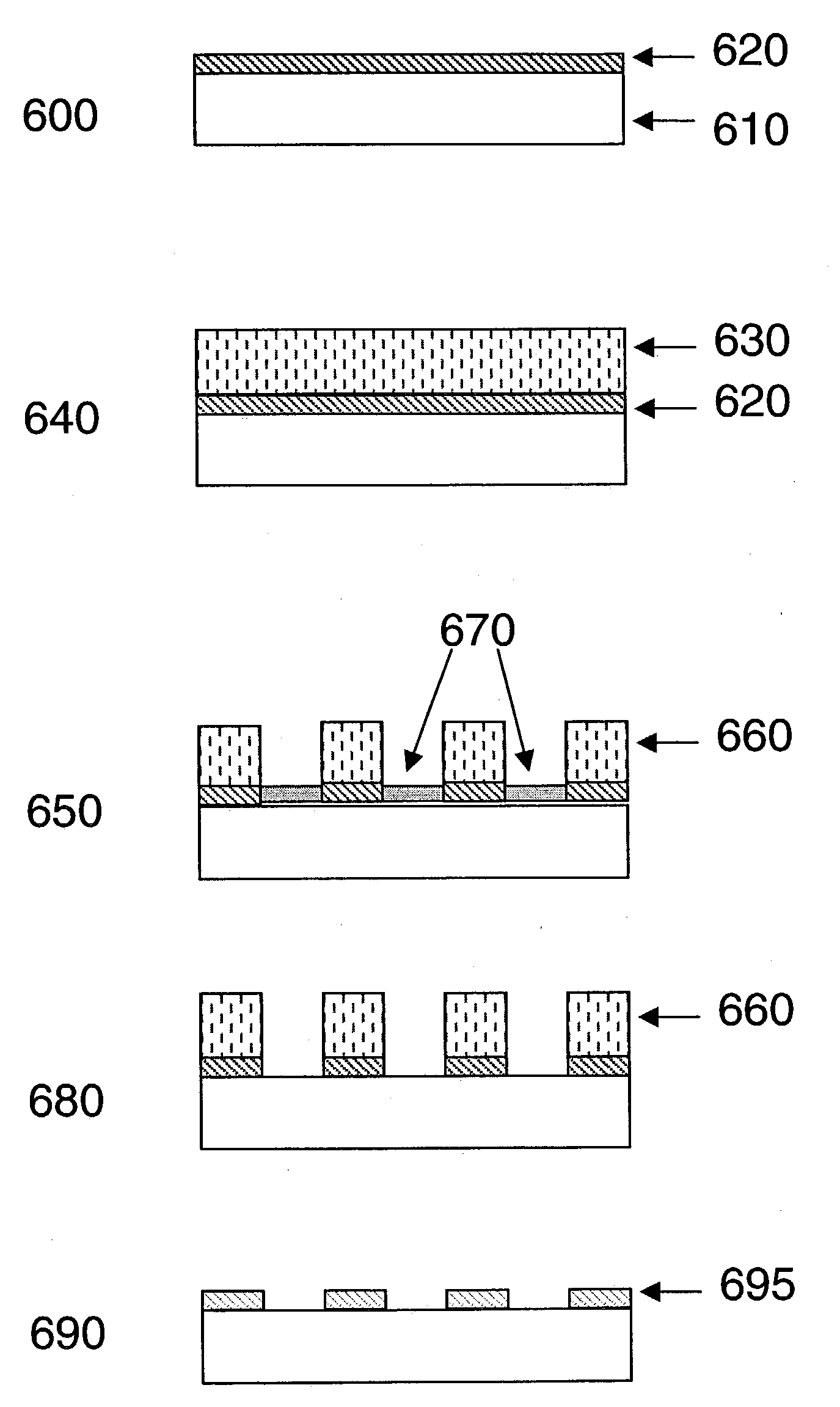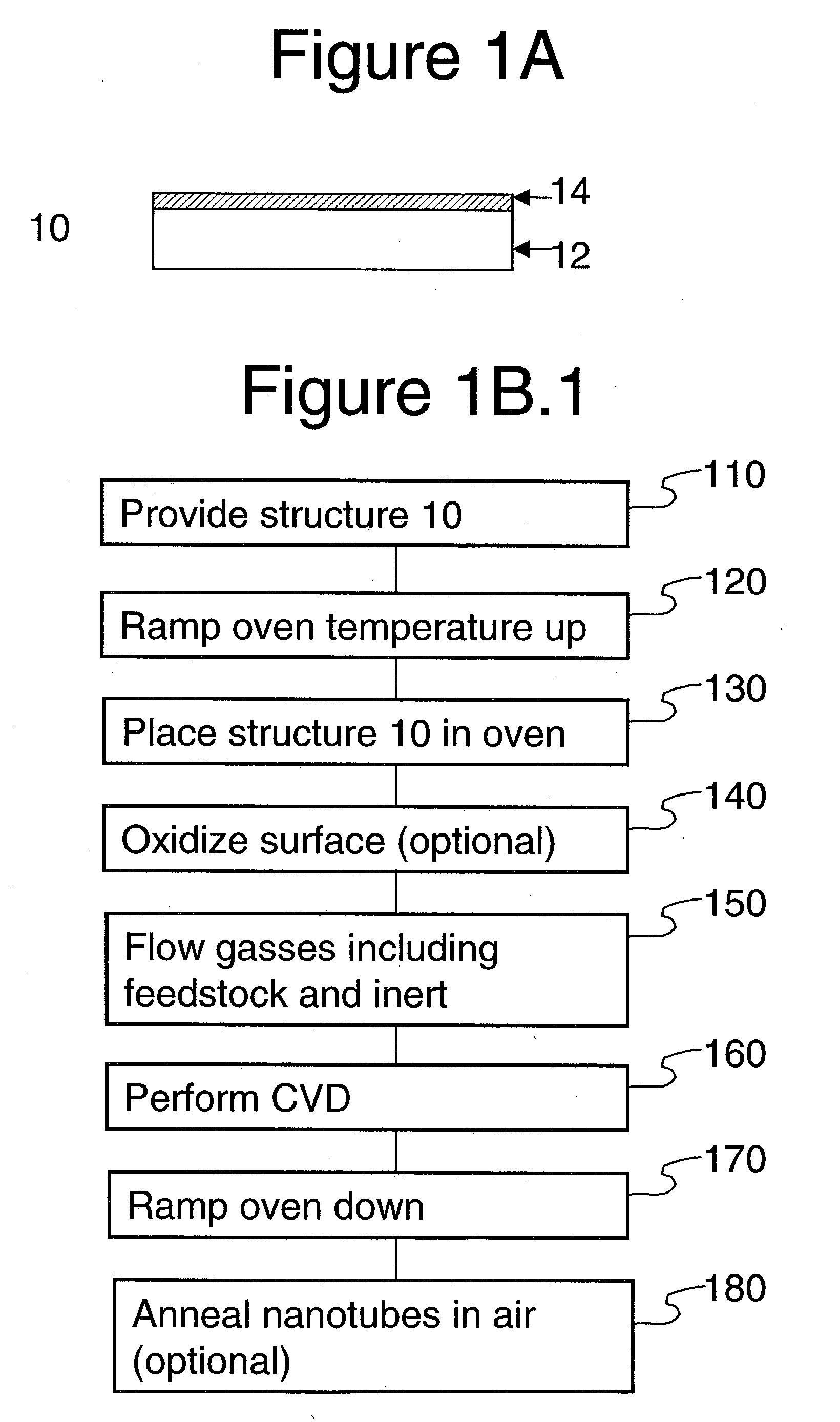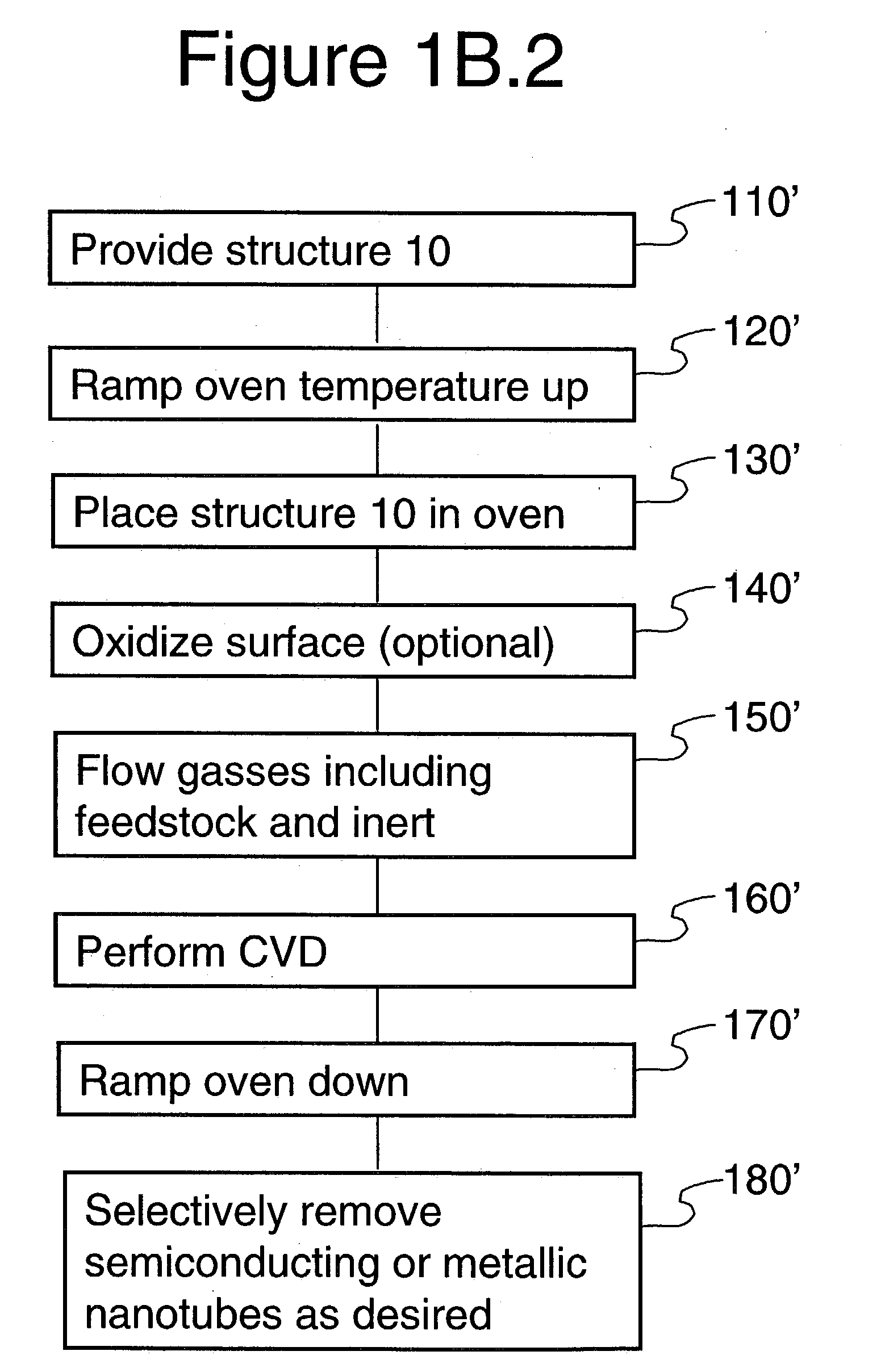Methods of using thin metal layers to make carbon nanotube films, layers, fabrics, ribbons, elements and articles
a carbon nanotube and metal layer technology, applied in the field of carbon nanotube films, layers, fabrics, etc., can solve the problems of difficult control of statistical variance of nanotube wire geometries so grown, high cost, and difficulty in commercial use of modern technology techniques, so as to reduce the rate, increase the resistance of non-woven fabrics, and reduce the density
- Summary
- Abstract
- Description
- Claims
- Application Information
AI Technical Summary
Benefits of technology
Problems solved by technology
Method used
Image
Examples
example 1
[0082]Thin metal layers of aluminum, iron, and molybdenum (15 nm, 1 nm, and 2 nm, respectively) are sequentially deposited on a substrate. The substrate is placed in a tube furnace in which the temperature is ramped to 500° C. and held for thirty minutes, in an ambience of air. The temperature is then ramped to a CVD temperature of 850° C. in a flow of argon gas and hydrogen gas, at 100:400 sccm Ar:H2 Upon reaching the CVD temperature, methane gas at a flow rate of 500 sccm is introduced into the furnace for a 1 minute growth time. Completing the CVD, the furnace is ramped down to below 200° C. in an argon atmosphere. FIG. 1C is a micrograph of a fabric made from this procedure.
example 2
[0083]All parameters of example 1 are duplicated except in place of methane, ethylene is used at a flow rate of 5.0 sccm for 10 minutes, the CVD temperature is 800° C. The same types of metal layers are employed; however, the thicknesses of the metal layers used are 5 nm aluminum, 1 nm iron, and 2 nm molybdenum. FIG. 1D is a micrograph of the nanotube growth resulting from such use of ethylene.
examples 3-6
[0084]Examples 3-6 show that the rate of methane gas flow affects the production of nanotube fabrics in typical CVD methods. From the micrographs one can see how the change in gas flow from 725 to 500 to 250 sccm affects the amount of growth. These examples show that the porosity and type of nanotubes grown may be controlled by changing specific parameters in the growth process. The growth of nanotubes is sustained over this range and can be finely controlled to generate primarily multilayer fabrics (750 sccm) to primarily monolayer fabrics (250 sccm). Reduction in gas flow to even lower levels is possible to assure primarily monolayer fabrics. An increase of the concentration would allow growth of fabrics with multilayers. Other parameters such as growth time and temperature can be controlled in concert with feedstock gas flow to provide more control over the fabric's characteristics.
[0085]Example 3: Methane is flowed at 725 sccm and the argon and hydrogen gas flow are kept constan...
PUM
| Property | Measurement | Unit |
|---|---|---|
| thickness | aaaaa | aaaaa |
| thicknesses | aaaaa | aaaaa |
| thicknesses | aaaaa | aaaaa |
Abstract
Description
Claims
Application Information
 Login to View More
Login to View More - R&D
- Intellectual Property
- Life Sciences
- Materials
- Tech Scout
- Unparalleled Data Quality
- Higher Quality Content
- 60% Fewer Hallucinations
Browse by: Latest US Patents, China's latest patents, Technical Efficacy Thesaurus, Application Domain, Technology Topic, Popular Technical Reports.
© 2025 PatSnap. All rights reserved.Legal|Privacy policy|Modern Slavery Act Transparency Statement|Sitemap|About US| Contact US: help@patsnap.com



